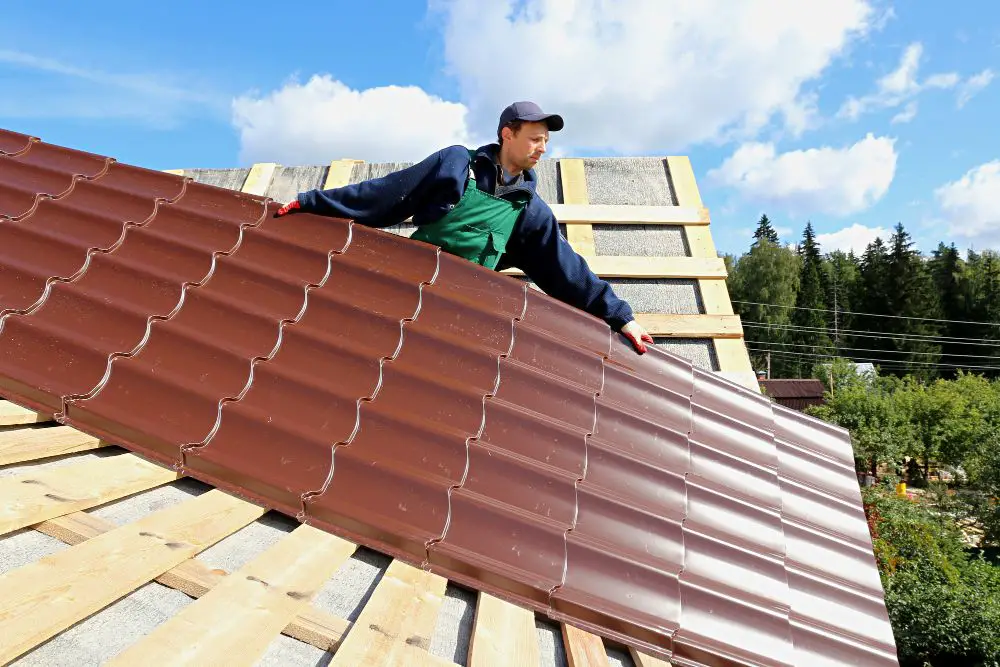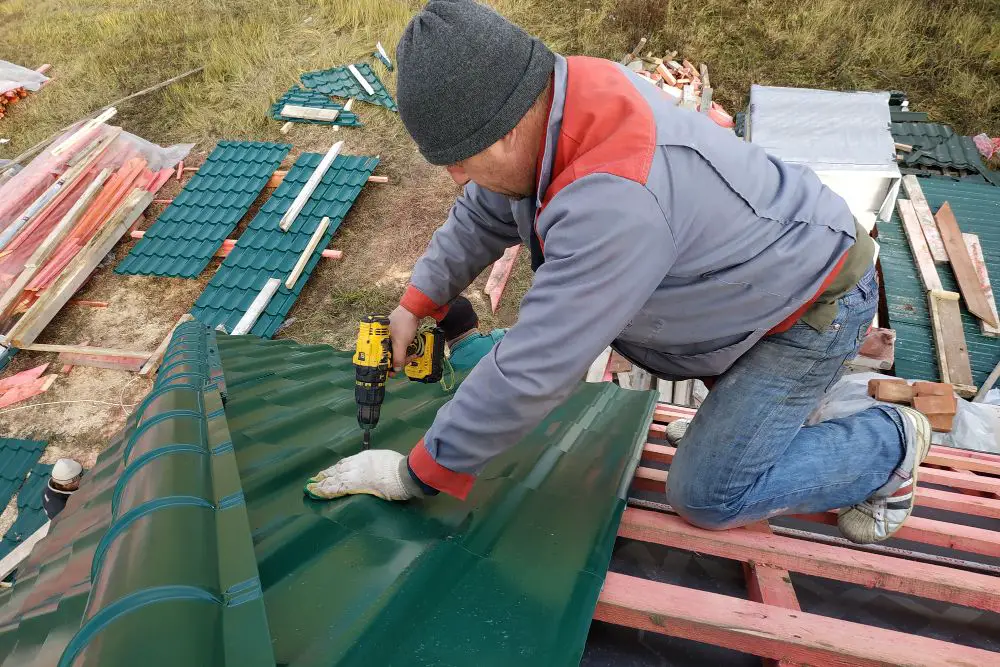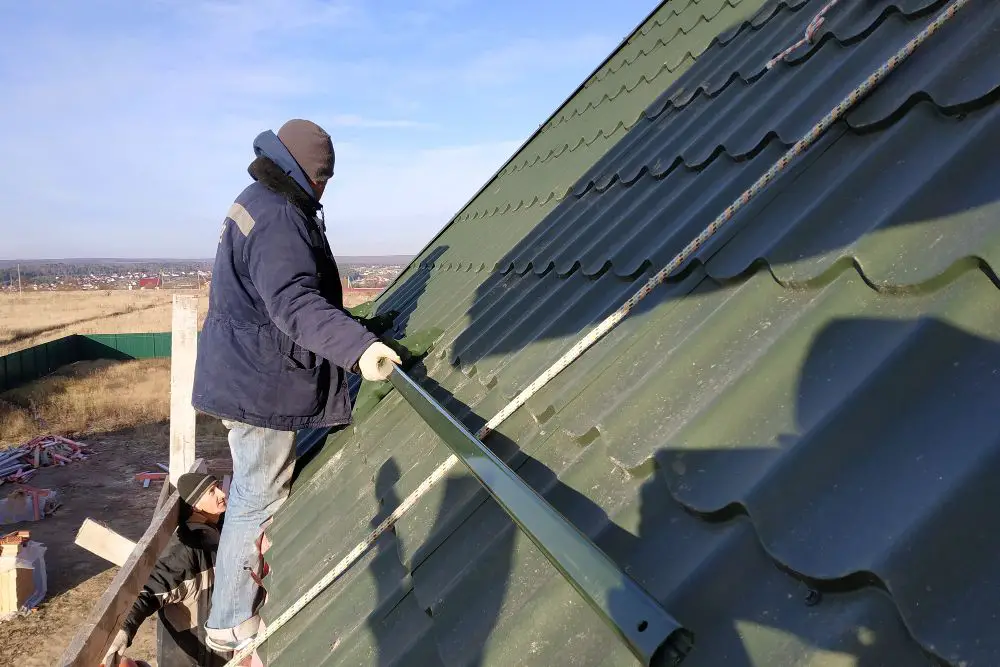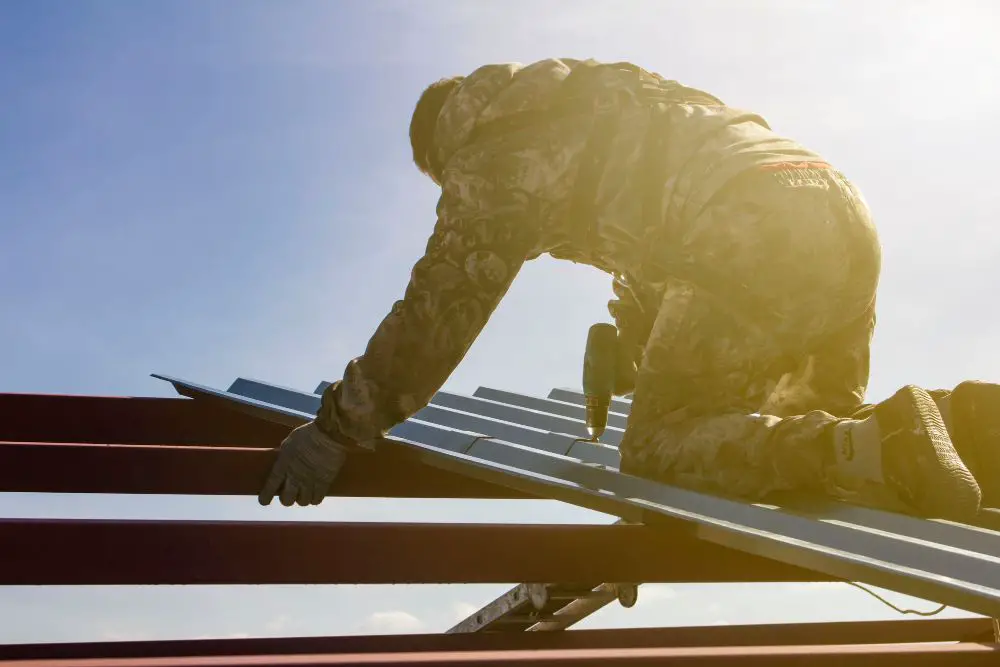Your old asphalt shingles aren’t doing you any favors. From increased maintenance to expensive installation costs, traditional roofing material just isn’t worth it anymore. If you are looking to change or improve your existing roof, then you should opt for metal roofing panels.
36-inch roofing sheets are the most popular width, accounting for 60% of all sales. This is likely due to the fact that they are a good size for most roofs and are available in a variety of materials. 24-inch roofing sheets are the second most popular width, accounting for 30% of all sales. They are often used on smaller homes and businesses, or on areas of a roof that are not as heavily trafficked. 18-inch roofing sheets are the least popular width, accounting for 10% of all sales.
Contents [show table of contents]
These metal panels are durable and have a lifespan of more than 30 years. Depending on the material, your metal roof can even last up to 200 years! They are fire-resistant, energy-efficient, and can withstand various environmental conditions like snow, rain, and strong wind. Due to these advantages, metal roofing panels are gaining popularity all over the United States.
There are various types of metal roofing panels available on the market. The thickness and style vary from one panel to another. So, while purchasing, you should know how wide are metal roofing sheets so that they will fit on your roof correctly. This article will tell you exactly how to determine what size of metal sheets you need for your new roof.
Metal Roof Materials
The metal roofing panels always consist of metal but can be made of various metals. The most common metals used in metal panels are aluminum, tin, copper, and steel.
Steel metal panels are commonly found on homes in the United States because they are durable, economical, and have a longer lifespan than some other materials. Two standard gauges are available in the market: G-60 and G-90. The G-90 is a thin gauge and therefore inexpensive. It is usually found in corrugated or ribbed steel roofing panels.

You will find coatings on steel panels that protect them from rust. The coatings are galvanized and galvalume. The galvanized coatings consist entirely of zinc, whereas the galvalume coatings consist of zinc and aluminum. Although galvanized layers are popular in the United States, manufacturers are now making steel metal panels with galvalume coatings. This is because they are three times more corrosion resistant than galvanized coatings.
Aluminum metal sheets are soft and light but durable. As they are light, you cannot use them in a location that receives regular snowfall, as the roof will quickly become dented. Copper metal sheets are another great alternative for metal roofs.
They can last for 200 years, but this impressive longevity makes them expensive. Pure tin metal sheets are outdated when it comes to metal roofs, but tin is still used. Tin coated with steel is the popular new choice for tin roofs, as the added steel ensures the tin roofs will be long-lasting.
Standard Size Of Roofing Sheets
Whenever someone is looking to add metal roofing to their home, they are undoubtedly curious what size sheets metal roofing comes in. It’s tough to say the exact size or length of the metal roofing panel because it differs from one panel to another depending on the metal, style, and manufacturers’ specifications.
Choosing shorter metal panels for your home may leave holes on your roof, which will be prone to leakages. They will not be energy-efficient and will not protect your house from harsh weather conditions.
On the other hand, if you choose metal panels that are too wide or too long, it will cost you more in labor and there will be wastage from some of the panels.
When looking at metal panels on the market, you will notice they come in different gauges like 22, 26, 24, and 29. The length and width also vary from one panel to another. You should know the precise measurements of your roof while purchasing metal panels. Knowing the correct measurements will allow you to choose the right size of metal panels for your home so that they cover your entire roof.
Sizes Of Corrugated Metal Roof
Before buying metal panels, you should know what size sheets metal roofing comes in so that it is easier for you to estimate how many panels you need for your roof. I have described below the standard size of a metal roofing sheet.
#1. Width Of The Panel
When it comes to buying corrugated metal panels, you will be wondering how wide metal panels are. Well, the corrugated metal panels are usually 26 inches wide. There is a 24-inch space between the rafter, truss, and joist. A corrugated metal roofing panel that is 24 inches wide will be sufficient.

The ribs stretch after a few days. Therefore, you will need a two-inch difference between the size of your sheets and the space you need them for, so you have a margin for error.
Consider also that you will be overlapping each panel with another panel during installation. So considering the stretching of the ribs, the space between the rafters, truss and joist and the overlapping that will occur during installation, the standard sheet metal width is 26 inches. However, 24, 36, and 39-inch panels are also available on the market.
#2. Length Of The Panel
The standard sheet metal length varies from 8 feet to 24 feet. In most shops, you will find the length of the panels is typically 16 feet.
#3. Thickness Of The Metal Panels
We refer to the thickness of the roofing panel as gauges. You will find different gauges of metal panels on the market, such as 24, 26 and 29. The 29-gauge sheets are thinner metal panels in comparison to 26 and 24-gauge sheets. The higher the gauge, the thinner the metal.
Another important thing to consider is that if you live in an area that is prone to hailstorms and snow, you should not opt for thinner gauges like the 29-gauge sheets. If you live in an area that does not receive heavy precipitation, 29-gauge metal sheets are durable, energy-efficient and inexpensive. metal roof last."}” data-sheets-userformat=”{"2":513,"3":{"1":0},"12":0}”>The thicker the metal the longer it lasts. Check out more about how long does a metal roof last.
#4. Standing Seam Panels
The standing seam panels are almost identical to corrugated metal sheets, but their peaks and grooves interlock instead of overlapping. The standard width of standing seam panels is 26 inches, and the length varies from 8 feet to 24 feet.
#5. Metal Shingles
Metal shingles are popular because they have a wide variety of styles and colors. The standard width of metal shingles is 12.5 inches while the standard length is 39.75 inches.
How To Measure A Roof For Metal Roofing?
If your roof has cracks, holes or leaks and you need to change it, metal roofing is the best option. Before ordering the metal panels, you need to know how to measure a roof for metal roofing so that you can calculate the total number of panels you need for your roof.

Measuring a roof is not a difficult task. But the method of measuring may differ from one roof to another. Some roofs have uneven edges like valleys and dormers, and therefore you need to consider the area of these uneven edges while calculating the total square footage of your roof. Read on to learn how to measure a basic roof with even edges in just 4 simple steps.
#1. Start By Measuring The Length Of The Roof
You need to measure the length of your roof by taking a measuring tape from one edge of your roof to the other edge – from the ridges to the eaves. Once you calculate the distance, note it down so you won’t forget. Let’s say you measured the length as 21 feet or 252 inches on one side of your roof.
#2. Calculate Width Of Your Roof
Once again using the measuring tape, measure your roof from one side to the opposite side. Once again, note your measurement down somewhere so you won’t forget. Let’s say your roof’s width came out to be 10 feet.
#3. Calculate The Area
Multiply the length by the width of your roof to calculate the square footage of one side of your roof. To calculate the total square footage of your roof, multiply this number by 2. Once you have the value you will know the total area of your roof. Now, add 10% to this number. This extra 10% will cover the overlapping of each metal panel.
In our case, we measured the length as 21 feet and the width as 10 feet. So the area of one side of the roof will be 210 square feet. For the total area of the roof, we multiply this number by 2. 210 X 2 = 420ft2.
Now adding 10% to 420ft2 to consider overlapping and other factors, we arrive at a value of 462ft2. So when obtaining metal panels, 462ft2 is the total area of your roof in this example.
#4. Obtain The Length And Width Of The Metal Sheet You Want To Use
Now it’s time to obtain the length and width of the metal sheet. You can obtain it directly by visiting a shop and directly measuring the metal panels. The standard sheet metal width is 26 inches, and the length varies from 8 feet to 24 feet.
There is also another method to determine the length of your metal panels. You need the distance from the fascia board to the peak of the roof. This space will tell you the length of the metal panel required.
Now whatever measurement you come out with, add one or two inches to it because some people want to overhang the metal panels for aesthetic purposes. Suppose you get 21 feet or 252 inches, then add two inches to it. So now, the length of each metal panel will be 254 inches.
If your metal sheet is 26 inches wide and 22 feet long, then the total area of that metal sheet is 572ft2.
#5. Calculate The Number Of Metal Panels
You must be wondering now how many metal sheets do I need for my roof. You need to divide the length of one side of the roof with the width of the metal sheet. In our case, the length of the roof is 21 feet, and the Width of the panel is 26 inches or 2.1 feet.
Now divide 21 by 2.1 which comes out to 10. You will therefore require ten panels for your roof. You have a calculation for one side of your roof, so repeat the procedure to find out how many panels you need for the other side. The number should be almost identical.
In our example, the total number of panels needed is ten, and the length of each panel should be 254 inches.
Cost Of Metal Roof
The cost of a metal roof depends on various factors like the type of metal you choose for your roof, location, gauge thickness, the shape of your roof, quality of paint and primer, and labor costs. It’s difficult to say the exact cost of your roof, as each roof will be different.

You need to spend $8.50 – $16 per square foot for your metal roof, including installation. The price varies depending on the metal used in the panels. In our case, we got 462ft2, and suppose the price we spend is $10 per square foot.
We would need to spend a total of $4620 for our metal roofing, and the metal roofing price per sheet will be $4620 divided by ten which comes out to $462. I have divided it by ten because in our case we need ten panels for our roof.
If you prefer metal shingles for your roof, then the price will range from $10.50 – $14 per square foot. The standing seam metal panel will cost you between $12 – $16 per square foot.
The corrugated steel metal panel price ranges from $1 – $5 per square foot. Corrugated steel is affordable for the majority of people. Overall, you need to spend a total of $10,500 – $19,500 to install a corrugated metal sheet on your metal roof. The price also includes the labor charges during installation.
Conclusion
The use of metal roof panels is increasing with every passing day, as they have many advantages. While buying the metal sheets, you must know how wide the metal roofing sheets are so that you can estimate how many panels you need for your roof and the approximate cost you need to replace your roof with new metal sheets.
I hope this article answers your question in detail. If you have any doubts or suggestions, you can write in the comment section of this article. I will be glad to hear your suggestions.
Happy roofing!
